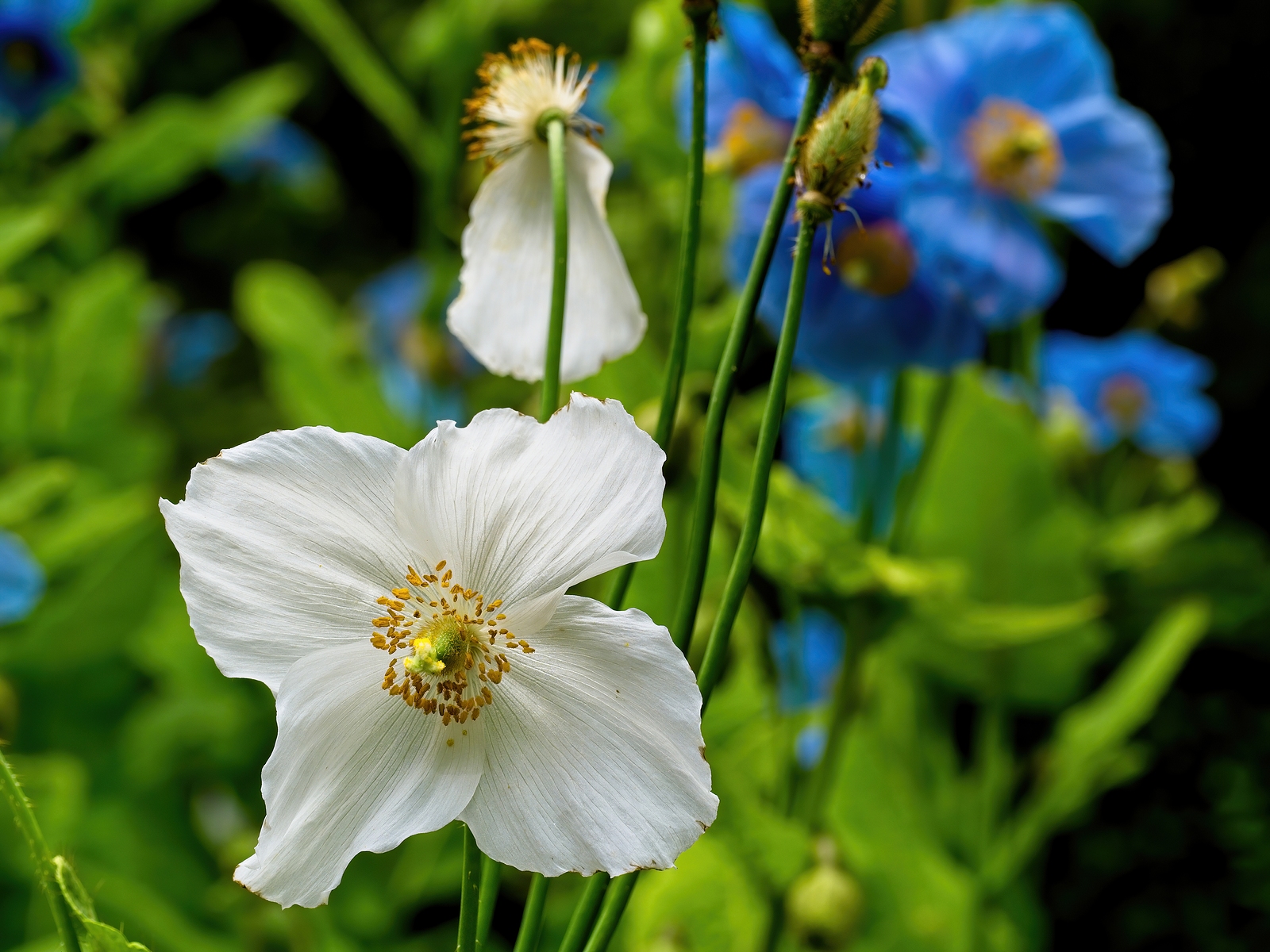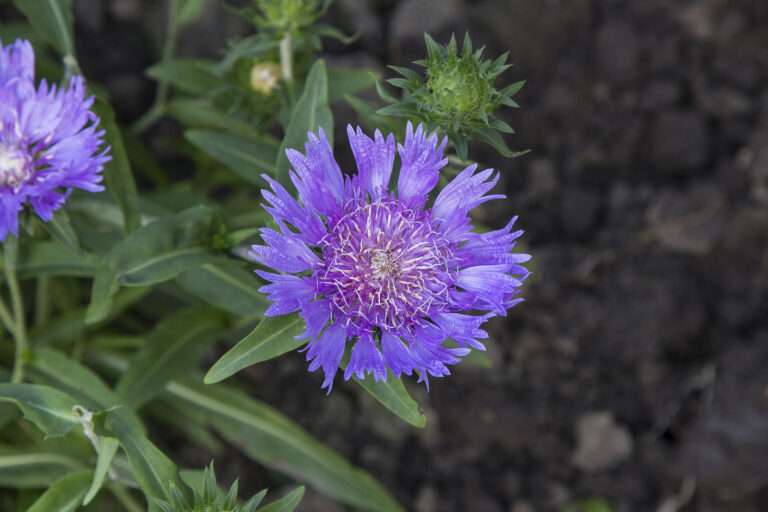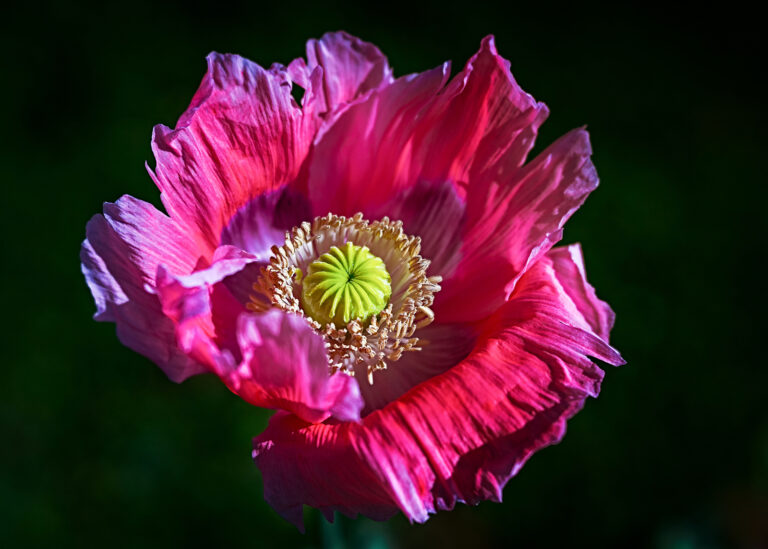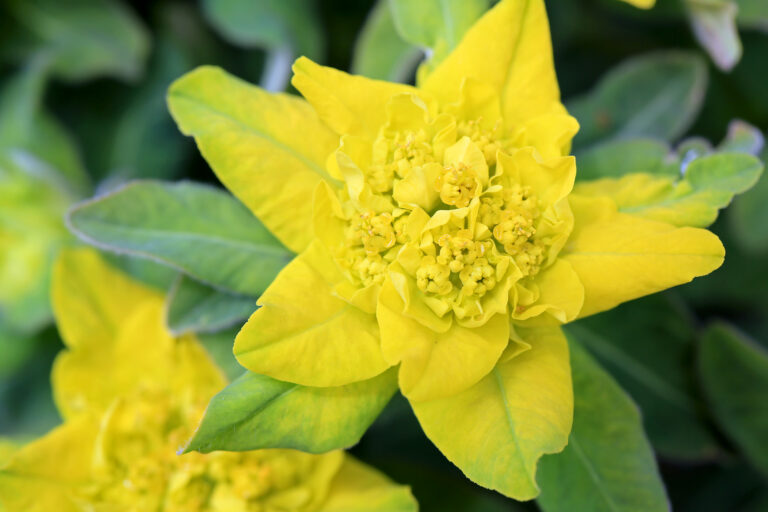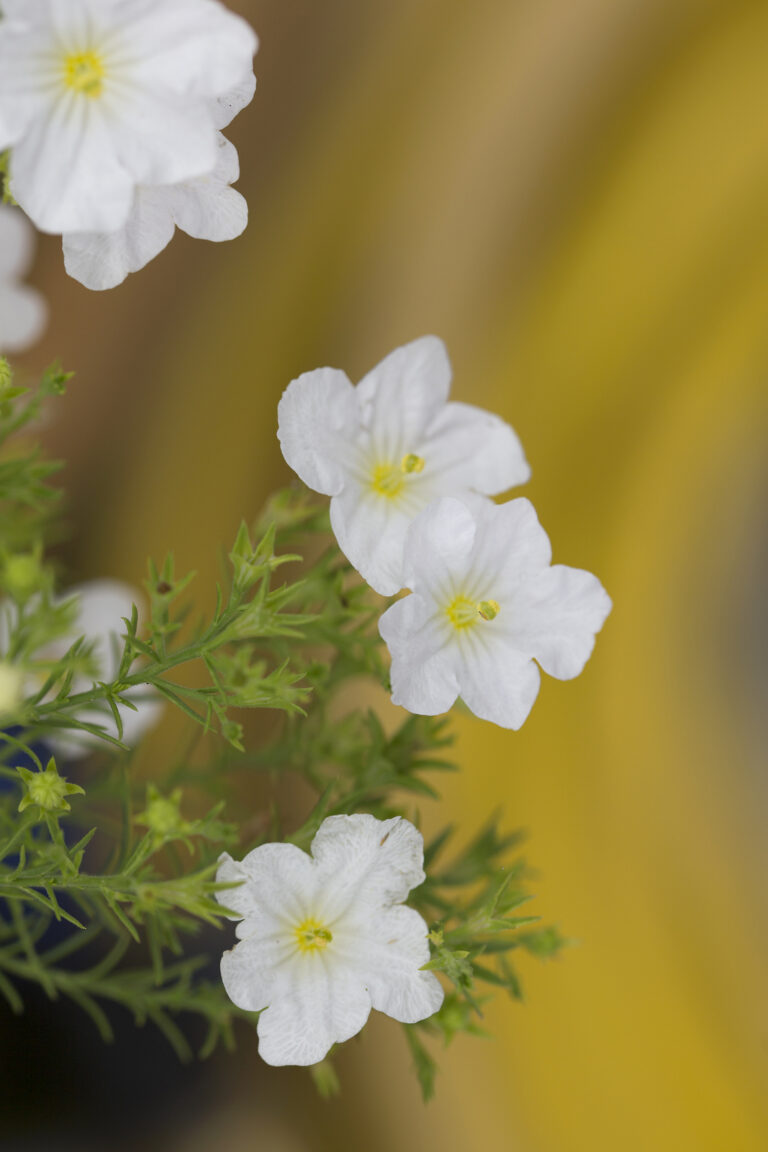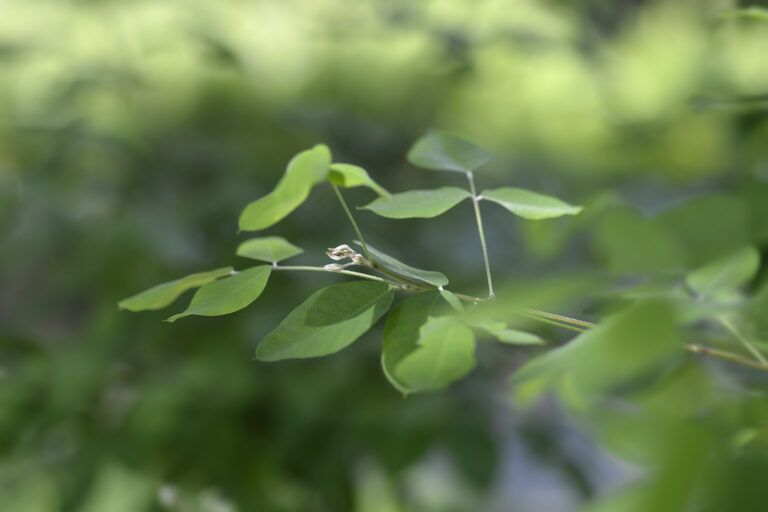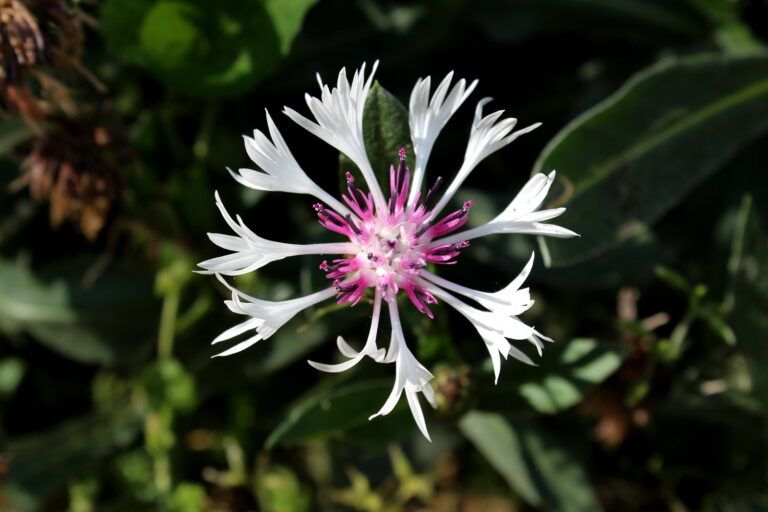How to Grow Meconopsis – Himmalayan Blue Poppy
Meconopsis, commonly known as the Himalayan Blue Poppy, is a breathtaking perennial known for its striking, true-blue flowers. This unique and enchanting plant, native to the high altitudes of the Himalayan region, is prized for its delicate, papery blooms that can range from deep blue to purple or white, depending on the species. While it’s best known for its vivid blue hues, there are several varieties and species that bloom in other shades, all of which add a rare beauty to any garden.
Growing meconopsis can be challenging, as it requires specific growing conditions to thrive, but the rewards are well worth the effort for those willing to recreate its ideal environment. With the right soil, moisture, and care, meconopsis can bring a touch of the extraordinary to shaded gardens, woodland settings, or cool-climate borders.
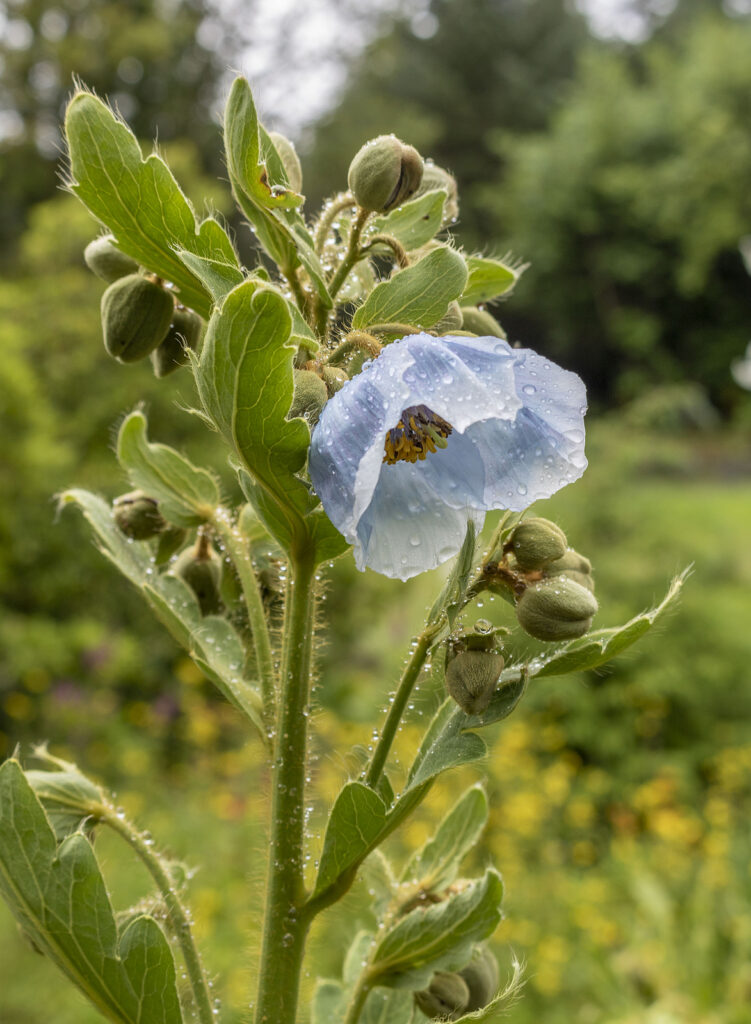
Choosing the Right Meconopsis Variety
The most famous species is Meconopsis betonicifolia, also known as the Himalayan Blue Poppy. Other species, like Meconopsis grandis, Meconopsis cambrica (the Welsh poppy), and Meconopsis x sheldonii (a hybrid blue poppy), can also be good choices. Each species may differ slightly in size, flower color, and hardiness, so it’s wise to select the type that best suits your garden’s climate and soil.
Where to Grow Meconopsis
Meconopsis thrives in cool, humid climates with mild summers, making it an ideal choice for gardeners in temperate or cool regions. It does best in USDA zones 6–7, though it can sometimes grow in zones as low as 5 if given protection.
- Light: Meconopsis prefers partial to full shade, particularly in warmer climates. In cooler areas, it can tolerate more sun as long as it’s protected from intense afternoon heat. Dappled shade under trees or along north-facing slopes is ideal.
- Soil: Meconopsis requires rich, well-draining, acidic soil with a pH of 5.5–6.5. It’s important to prepare the planting area with plenty of organic matter like compost or well-rotted leaf mold to retain moisture and improve soil structure.
- Moisture: Consistent moisture is crucial. The soil should be kept evenly moist but not waterlogged, as meconopsis is susceptible to root rot in overly wet conditions. Mulching around the plants can help retain moisture and maintain cooler soil temperatures.
Planting Meconopsis
- Timing: Plant meconopsis in early spring or early fall when temperatures are cool. This gives the roots time to establish before the hotter months.
- Soil Preparation: Before planting, enrich the soil with plenty of organic matter, and mix in a small amount of sand or grit to improve drainage if needed. Avoid using lime, as meconopsis requires an acidic environment.
- Spacing: Space plants about 12–18 inches apart, depending on the variety. This allows for good air circulation, which helps prevent fungal diseases.
- Planting Depth: Dig a hole that is just deep enough to cover the root ball. Place the plant in the hole, backfill with soil, and gently firm it around the base. Water thoroughly to help the soil settle.
If planting from seed, be patient: meconopsis seeds have a slow and often erratic germination process. It’s best to sow seeds indoors in late winter, using a cold stratification technique (chilling seeds for several weeks) to improve germination rates.
Growing and Caring for Meconopsis
Watering
Meconopsis needs consistently moist soil, especially during warm or dry spells. Water the plants regularly, ensuring the soil stays evenly moist but never waterlogged. Mulching around the base of the plants can help retain moisture and prevent the soil from drying out too quickly. Avoid getting water on the leaves, as meconopsis can be prone to fungal issues.
Fertilizing
Meconopsis benefits from a balanced, slow-release fertilizer applied in early spring to promote healthy growth and flowering. Alternatively, a top dressing of rich compost or well-rotted manure can supply nutrients naturally. Avoid over-fertilizing, as this can lead to lush foliage at the expense of blooms.
Pruning and Maintenance
Remove spent flowers to encourage additional blooming and prevent seed formation, which can weaken the plant. In colder climates, cut back the foliage to ground level after the first frost, and mulch with a layer of organic material to protect the roots over winter.
In warmer climates, meconopsis may behave as a short-lived perennial or biennial, and it may require replanting every few years to maintain its presence in the garden. Dividing mature plants every 2–3 years in early spring can help renew vigor and keep clumps manageable.
Meconopsis Propagation
Meconopsis can be propagated by division or seed, although both methods require patience:
- Division: Mature plants can be divided in early spring. Carefully dig up the clump and gently separate the crowns, replanting them immediately to minimize stress.
- Seed: Sow fresh seeds indoors in a cold frame or seed tray, lightly covering them with a thin layer of soil. Keep the tray in a cool, shaded location, and maintain consistent moisture. Germination may take weeks or months.
Using Meconopsis in the Garden
Woodland and Shade Gardens
With its love for cool, shaded environments, meconopsis is a natural choice for woodland and shade gardens. Its striking blue flowers stand out beautifully against the muted greens and browns of ferns, hostas, and other woodland perennials. The delicate foliage and papery petals add a soft, ethereal quality that enhances the naturalistic feel of shaded garden spaces.
Borders and Beds
Meconopsis adds a touch of elegance to mixed borders and flower beds, especially when planted in clusters. Its upright, graceful habit makes it an excellent focal point or “wow” plant. The blue tones are particularly effective for creating contrast when paired with yellow, white, or purple flowering plants. Plant it toward the middle or back of the border to allow shorter, shade-loving plants like astilbe, primroses, or bleeding hearts to fill in the foreground.
Rock Gardens and Sloped Areas
In cooler climates, meconopsis can be grown successfully in rock gardens or sloped areas with well-draining, rich soil. The elevation and incline help prevent water from pooling around the roots, reducing the risk of root rot. However, it’s essential to maintain adequate moisture, especially in summer, to keep the plants healthy.
Companion Planting
Meconopsis pairs well with other moisture-loving, shade-tolerant plants such as ferns, hellebores, Solomon’s seal, and trilliums. These plants share similar cultural requirements and create a visually cohesive display, enhancing the cool, lush atmosphere that suits meconopsis. Avoid pairing it with sun-loving plants, as the intense light and heat can stress meconopsis, leading to poor performance or dieback.
As a Specimen Plant
With its rare color and captivating form, meconopsis can serve as a stunning specimen plant in areas where it’s given prime attention. Placing it in a shaded courtyard, near a patio, or along a garden path can allow you and your guests to appreciate its beauty up close. Specimen planting also ensures meconopsis receives the specific care it requires, away from competing plants.
Meconopsis Challenges and Tips for Success
Overcoming Climate Challenges
Meconopsis thrives in cool, humid climates, and can struggle in areas with hot summers. In regions where temperatures regularly exceed 75°F, consider planting it in a microclimate with extra shade and humidity, or use it as an annual to enjoy its beauty without the need for long-term care.
Soil Management
Maintaining the right soil conditions is crucial for meconopsis. Test your soil periodically and adjust it as needed to ensure it stays within the acidic range. Amend with organic materials like compost or leaf mold, which improve soil structure and support the plant’s need for consistent moisture.
Managing Pests and Diseases
Meconopsis is susceptible to slugs and snails, especially in damp environments. Using organic slug deterrents or setting up copper barriers can help protect young plants. Additionally, keep an eye out for fungal diseases in humid conditions, as meconopsis can be prone to mildew and rot if air circulation is poor.
Meconopsis Summary
Meconopsis is a unique and captivating addition to cool-climate gardens, rewarding gardeners with its rare and vivid blooms. Although it requires specific growing conditions, including shade, rich acidic soil, and consistent moisture, meconopsis can thrive and provide years of beauty with a little care and attention. Whether used in woodland gardens, mixed borders, or as a standout specimen, meconopsis adds a magical, otherworldly charm that transforms any garden space into a tranquil oasis.

